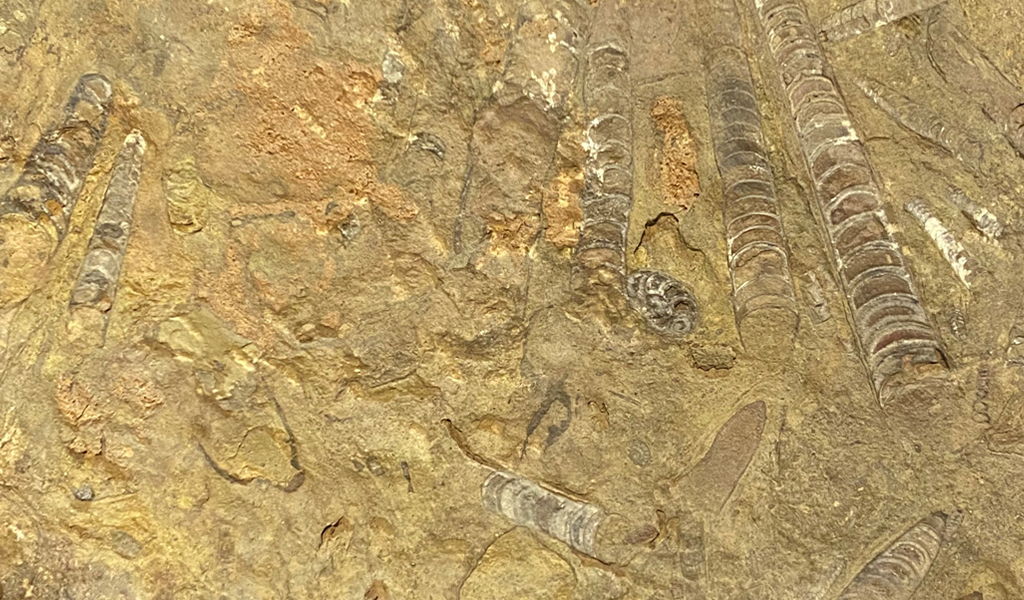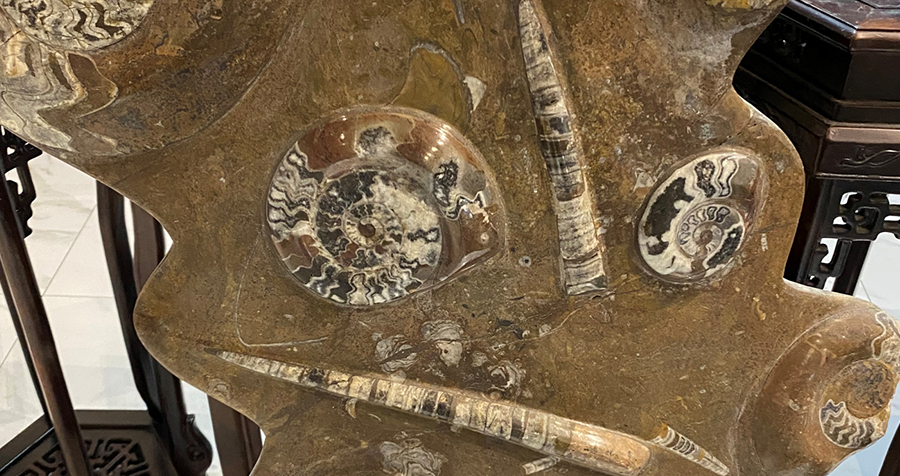學名:Orthoceras/Ammonites
年代:古生代
發現地:摩洛哥
說明:
直角石是化石中圓錐狀筆直的生物,尖端為其末稍,游泳時呈扁平狀,以前端觸手捕捉獵物,而圓錐柱體正是直角石的外殼,稱為「直角石式殼」,是由間距緊密的凹凸腔室組合而成的喔。
Orthoceraswere conical-shelled creatures who became flat while swimming and used its tentacles to hunt. The conical shell, known as an “orthocone”, were composed of many bumpy chambers with little space between them.
菊石則是化石中螺旋狀化石,牠們是中生代數量最多的海洋動物,最早在泥盆紀出現在地球上,最後與恐龍、箭石等生物一起於白堊紀末期滅絕。與章魚、魷魚有相當接近的關係,此外,經由菊石化石殘留的墨汁推斷,他們遭受攻擊時也會噴出墨汁逃走,就如同魷魚一樣呢!
Ammonites, on the other hand, had spiral shells. They were the most numerous marine species on Earth during the Mesozoic, appearing in the Devonian and going extinct, along with animals such as dinosaurs or Belemnitida, in the K-Pg extinction event. They are closely related to modern species such as octopuses or squid, and according to residue found in fossils, they also release ink as an escape mechanism, in the same manner as squid.
就分類上來說,牠們都屬於頭足綱,但獨立分割出「直角石亞綱」和「菊石亞綱」,在摩洛哥剛好有兩者的化石交錯出現在化石層上,是不是相當有趣呢!
Taxonomically speaking, both Orthocerasand Ammonites are of the Cephalopoda class, but they independently split into two subclasses: Orthoceratoidea and Ammonoidea respectively. This Moroccan fossil you see before you have both types criss-crossing across a fossil layer. How interesting!

另外,由本館蒐集的化石中可以清楚比較化石清理、拋光前後兩者的狀況,就讓您睜大眼睛,找出未清理化石中的直角石與菊石身在何處呢?
You will note the difference between the fossils that have been cleaned and polished and those that have not among the collection. Try to identify Orthoceras and Ammonites in the
original rocks!

